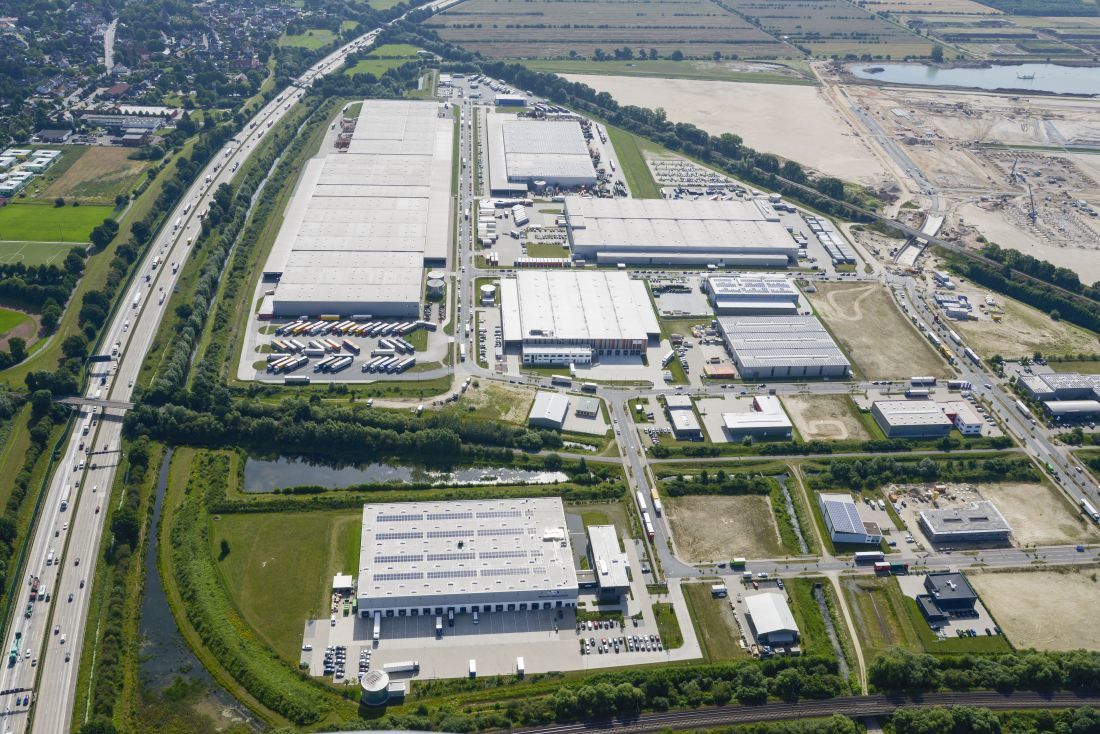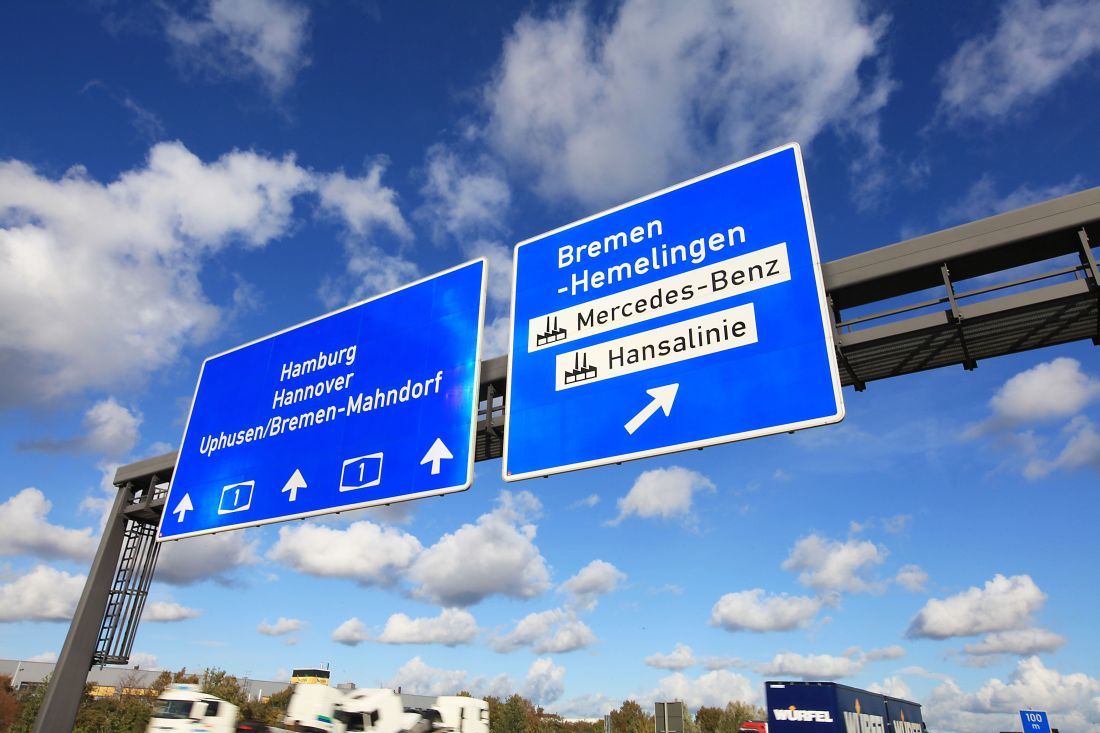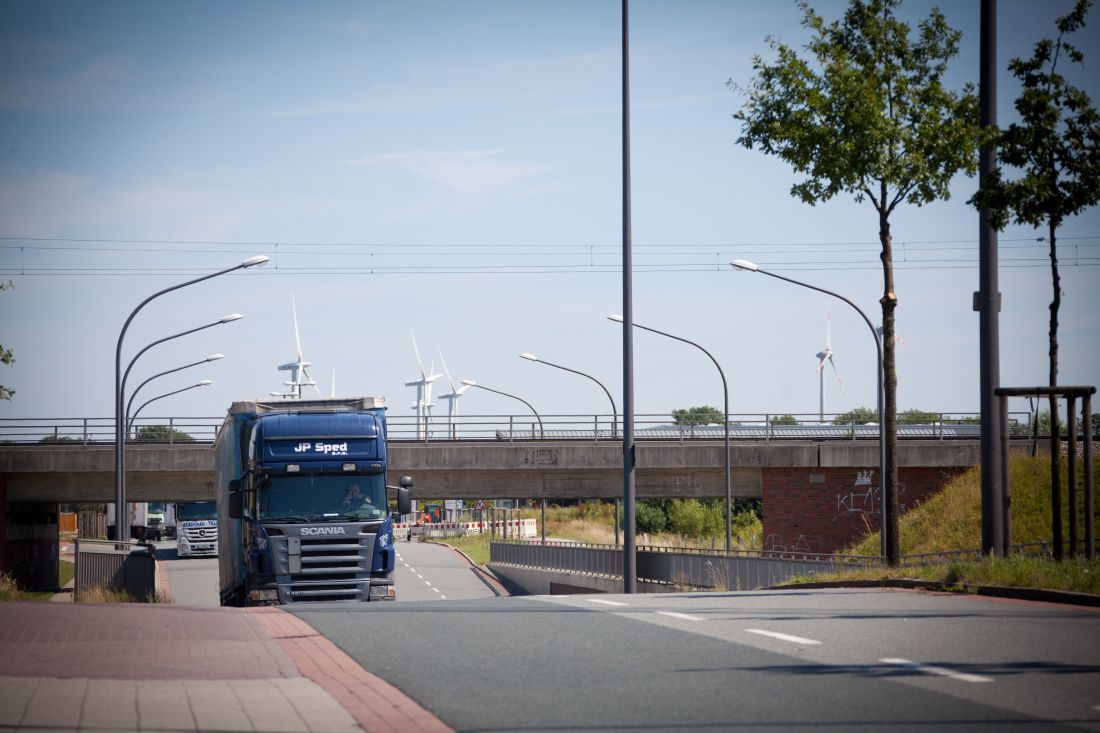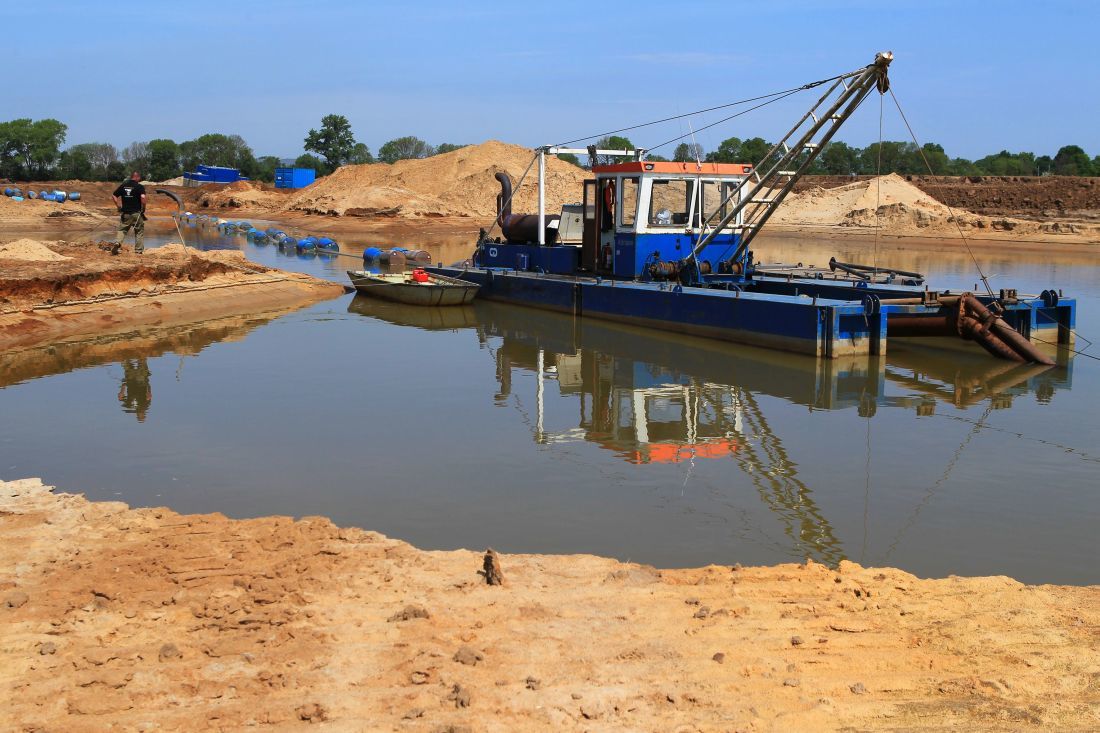From greenfield site to Hansalinie Industrial Estate: the flagship project continues to grow
Investing in BremenThe construction phases shaping Bremen’s automotive hub

Providing commercial real estate is a key element of regional development. One of the primary tasks of Bremeninvest is to make attractive sites available to industry. The foundations for the Bremen Hansalinie Industrial Estate flagship project were laid back in 1991, when Bremen acquired large expanses of land in the Hemelingen, Arbergen and Mahndorf districts of the city. In fact, the preparations for the development of this strategically significant area go back as far as the 1980s.
The Bremen Hansalinie Industrial Estate is particularly attractive to automotive companies because of Mercedes-Benz. The multinational corporation’s record-breaking plant in Bremen-Sebaldsbrück is only a stone’s throw from the Hansalinie Industrial Estate. The Hemelingen Tunnel was specifically built to shorten the route. This makes the site particularly attractive to automotive firms that supply the plant on a just-in-time or just-in-sequence basis. These include the international Dräxlmaier Group, which moved from its premises in Achim at the beginning of 2017 to a new building of around 10,000 square metres on Bremen’s industrial estate.
A winning location
The advantages for businesses are obvious: the Bremen Hansalinie Industrial Estate has a dedicated junction on the A1 autobahn, only a short distance from the Bremer Kreuz intersection. The excellent connections and the fact that traffic congestion can generally be avoided are compelling arguments in its favour. The infrastructure, which includes the amenities of a motorway service station, is perfectly tailored to those who use it. Because of the combination of manufacturing and automotive logistics as well as service providers, trading companies and the skilled trades, the site is becoming a sought-after location. As Jutta Zernikow, project manager at Bremeninvest for the east Bremen region says: “We have a good mix of industries at the Bremen Hansalinie Industrial Estate and this will help to ensure the long-term success of the site.” Currently, more than 3,600 people work here at over 80 different companies. In January 2018, Wagon Automotive Bremen GmbH opened a commercial unit in the newly developed part of the site. Adient Ltd. moved within the industrial estate to new and larger facilities and completed work on a new logistics building. Further construction projects are currently being implemented.

Current status: the second of six construction phases is close to completion
The advantages offered by the site explain why it is so popular. As soon as the areas in construction phases 0 and 1 had been sold, except for a few residual areas, concerted efforts were made to press ahead with the second construction phase. According to Jutta Zernikow, 40 of the 55 hectares in this phase of the project are already sold or reserved (as at April 2018). Construction phase 2 is close to completion.
The project will cost around €53 million. The necessary funding was granted by the regional government in Bremen. But the end is not in sight by any means: the development of phases 3 to 5, which will result in approximately 160 hectares of net commercial floor area, will continue on a demand-driven basis.
Numerous tasks to complete in the development of the site in preparation for building
Developing an industrial area is a time-intensive process. A forward-looking land development policy is therefore vital. Not only because demand is so high at this automotive hub but also because the development and expansion of the site will involve a great deal of highly complex coordination between all concerned. “Geological investigations and expert reports, and planning for environmental protection and nature conservation are just a few of the tasks that have to be undertaken before the actual site preparation can begin,” explains civil engineer Silke Overman, responsible at Bremeninvest for the construction of public infrastructure on industrial estates. Building work does not start until much later, as an extract from the build schedule illustrates:
- 2005 Development plan is approved (and has since been amended several times)
- 2011 Planning commences for a railway bridge and trough structure
- 2013 Start of construction of the railway bridge and trough structure
- 2014 Unexploded ordnance search as a preparatory measure for the necessary earthworks
- 2016 Deadline for the call for tenders for drainage system construction work
- 2017 Start drainage system construction work
- 2017 Completion of trough structure
- 2017 August: Topping-out ceremony for the first buildings
- 2018 Completion of development project, two years ahead of original schedule

Meticulous preparation for an optimal site
To be able tailor sites to those who need them, there are many more tasks that need to be done. As large parts of Bremen were bombed during the Second World War, a bomb disposal unit consisting of 20 people had to search the entire area, including set-aside areas, for a year. Following that, further work was required, as project manager Silke Overman explains: “Our main task was to build a railway bridge and associated trough structure and to re-route the Arbergen Canal. We also had to clear around 800,000 cubic metres of mixed soil and backfill the same quantity of sand. Only then could we build roads and allow trucks to drive across the site.”
As the ground conditions in Bremen are an important factor, geological investigations and assessments had to be carried out. Without these, it is not possible to provide reliable statements about the land and the development potential of the site. “The sand that was required for preparing the site was extracted from a 600-metre by 200-metre lake on the Bremen Hansalinie Industrial Estate using three suction dredgers, and then deposited onto the site,” Silke Overman explains. This is the most cost-effective and environmentally friendly method. To put that into context: for 1,500 cubic metres of sand alone, 80 to 100 lorry journeys would have been required per day, adding further congestion to the traffic routes. That would mean around 50,000 lorry journeys in total.
Silke Overman also explains that there are a number of requirements from individual administrative bodies in Bremen that need to be coordinated. This was done in consideration of the environmental and conservation aspects as well as with regard to water-management concerns ‒ and under considerable time pressure. In addition, consideration has to be given to the interests of private investors, e.g. ensuring accessibility to the site during the development process.

Integrated work processes for future success
The creation of all the infrastructure is progressing seamlessly. “While new logistics warehouses are being built in one location in phase 2, land is still being excavated, dredged and levelled off in another – and the infrastructure created,” explains Jutta Zernikow. The last road in this phase will be completed in early June 2018, and the last trees planted in autumn 2018.
There are already discussions in Bremen about new sites and expansion opportunities. These include, for example, political consultation on another autobahn junction for the industrial estate in light of the increasing volume of traffic and the availability of new areas.
“Preparations are under way so that we can quickly move forward with our plans for the third phase,” says Silke Overman. It is a never-ending process: as soon as one phase ends, the next is already beginning. Managing urban development in a city is a complex undertaking but it is also highly rewarding. It sets the direction for the coming years and decades.
Further information about the Bremen Hansalinie Industrial Estate you find here.
If you have any questions regarding Bremen Hansalinie Industrial Estate, please contact Jutta Zernikow, +49 (0)421 9600 249, jutta.zernikow@wfb-bremen.de.
Success Stories
Bremen’s Economy in Figures: Statistics 2025
The State of Bremen is a strong economic hub. A look at the latest statistics highlights its economic strength — summarising key data such as cargo volumes, export performance, industry turnover, and more.
Learn moreMedium-Sized Companies in Bremen Showcasing the Full Range of the Local Economy
Medium-sized companies form the backbone of Bremen’s economy. They create jobs and produce goods that are in demand worldwide. Here is a selection of ten businesses that illustrate the diversity of Bremen’s economic landscape.
Learn moreTwelve international food and beverage companies in Bremen
Becks and Melitta may be high-profile brands, but international food and beverage companies also manufacture lots of other products in Bremen and Bremerhaven. Here are twelve examples.
Learn more